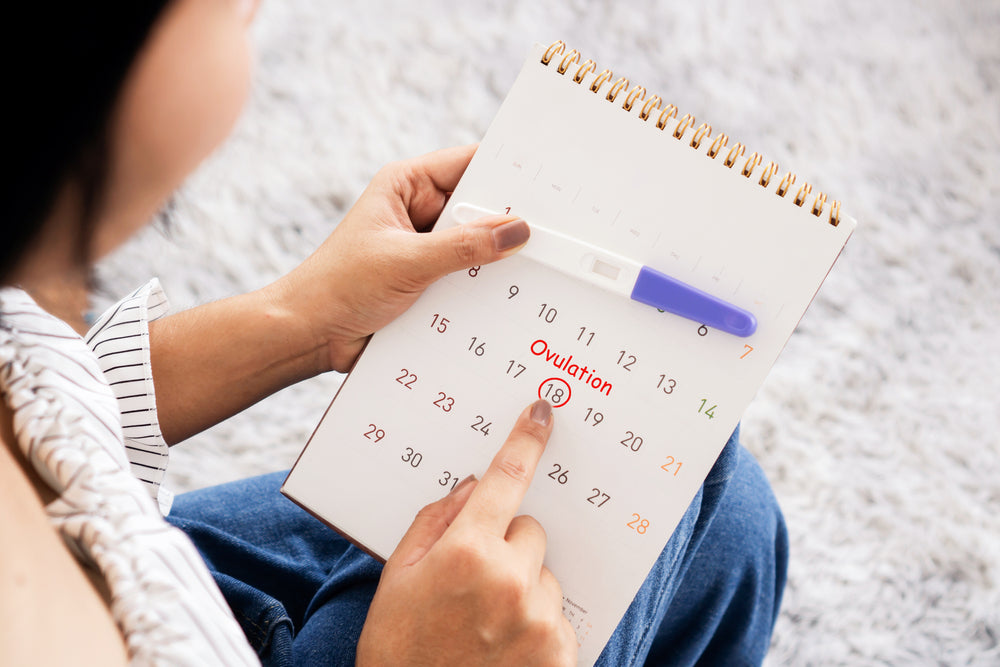How can I actually calculate my ovulation? This question is especially important for women with Desire to have children very interesting. After all, the probability of becoming pregnant and thus fertility is highest on the day of ovulation.
Ovulation rarely causes physical pain - in most cases women do not even notice it. This makes it quite difficult to detect it. You can now find a variety of Ovulation calculators However, in our blog post we want to valuable tips that will help you find out the day of your ovulation as best as possible, even without an ovulation calculator.
What is ovulation?
We have already used the term 'ovulation' a few times. But what is ovulation and what happens in this phase of the cycle?
Let’s start with the basics: The Menstrual cycle varies in length from woman to woman. It starts on the first day of the period and ends on the last day before the next menstrual period. The length of the cycle is usually 23 to 35
As a rule, ovulation occurs once in each menstrual cycle, usually 12 to 16
Find the right Taynie for you. Discover our variety!
Calculate ovulation - tips
In women with an average cycle length of 28
One method to calculate your ovulation is the Documentation of your cycle Always note the start and end of your period on your calendar. You should do this over a longer period of time to see whether your cycle is regular or not.With a regular cycle, ovulation usually occurs 12 to 16
Ovulation symptoms: How do I notice it?
Physically, a lot will change in you as you ovulate. We want to show you these changes in your body. Because once you know the symptoms of ovulation, you can estimate relatively well when it will take place.
In the first In the first half of the cycle, i.e. from the beginning of your period to ovulation, the body temperature is lower than in the second half. One day before ovulation, the temperature drops briefly and then rises by 0.2 to 0.5 degrees. This is how you know that ovulation has occurred. You should measure your temperature over a longer period of time. If three consecutive values are higher than the highest value of the past six
The day before ovulation occurs, the level of luteinizing hormone (LH) increases. The increase in this hormone is responsible for the release of the mature egg and thus ovulation. With the help of an appropriate LH test, you can detect when you are ovulating.
In addition the cervix changes during ovulation. Feel the cervix with your finger over a longer period of time. This becomes softer towards the time of ovulation and the position also changes - it is then higher.
Check your discharge because this also changes depending on the phase of the cycle and can tell you when ovulation takes place. Before ovulation, more cervical mucus is produced; it is usually thinner than usual and crystal clear. After ovulation, it becomes weaker again, white-yellowish and the consistency is more sticky.
If you want to know more about vaginal discharge during the cycle phases If you want to know more, please read our blog post about it!
Our tip for you: Our washable pads are not only good for catching your bleeding. You can also use them for vaginal discharge and no longer have to worry about it ending up in your underwear. Our String is perfect for discharge and looks super chic.


